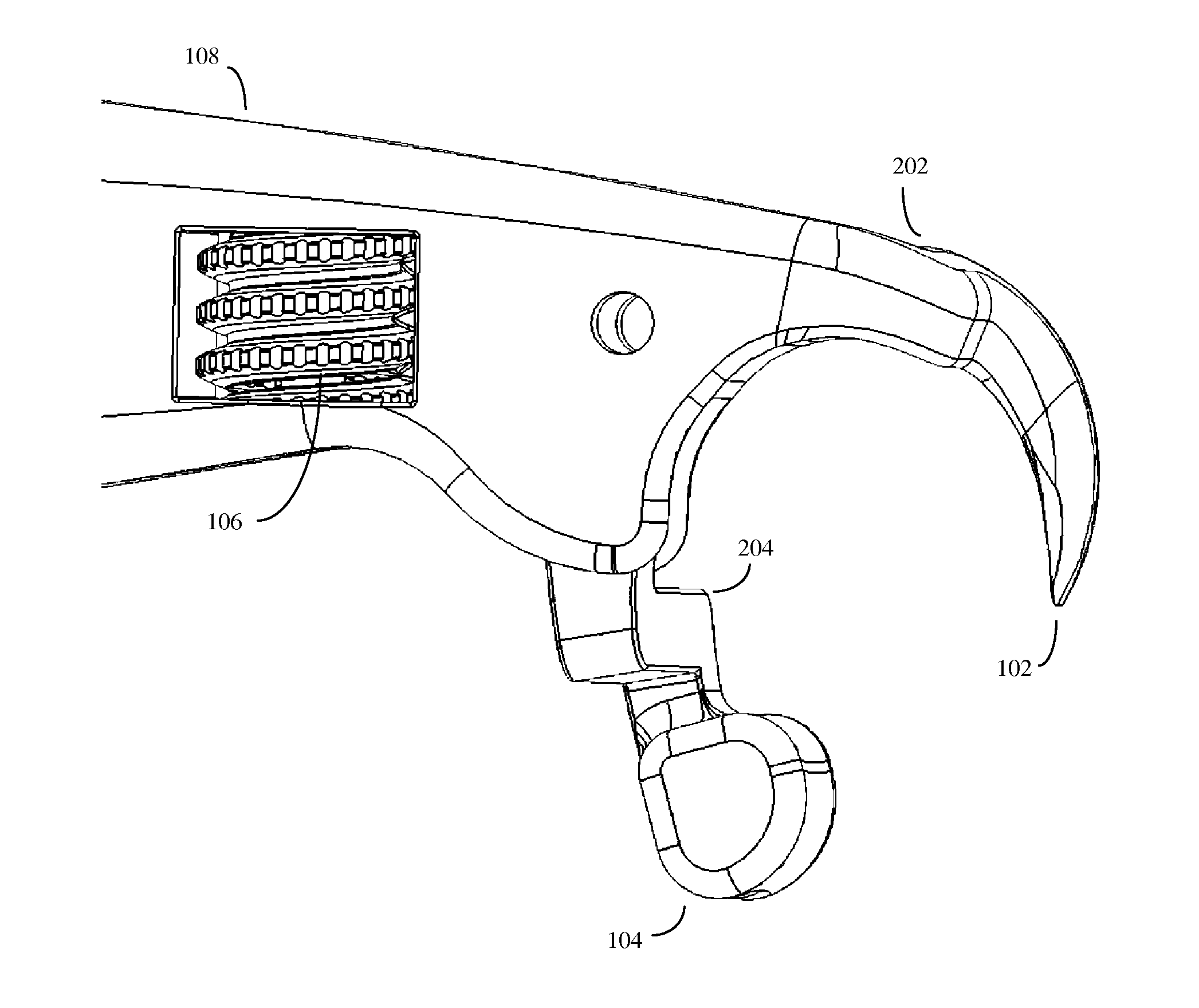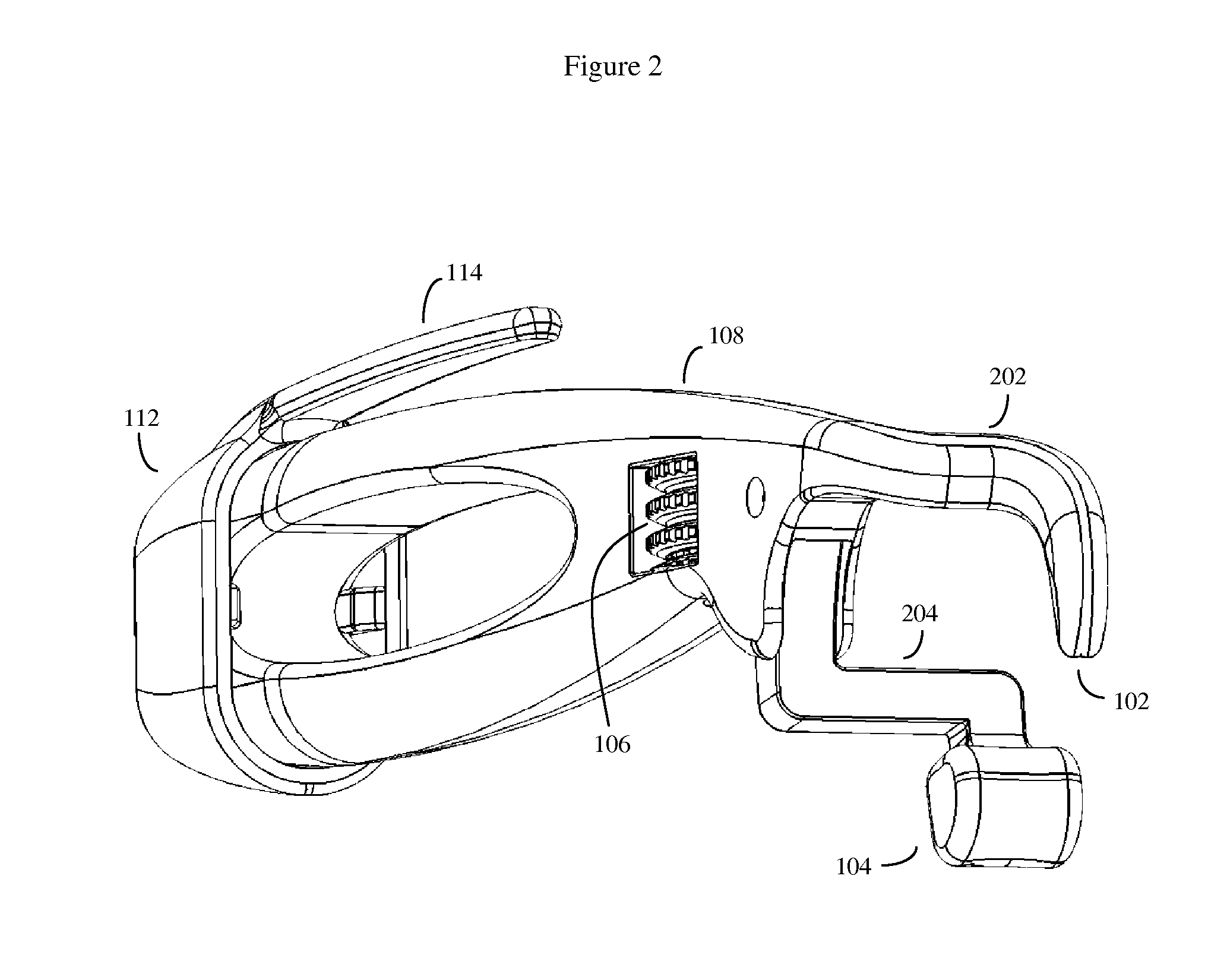Dental fulcrum wrench
a fulcrum wrench and tooth technology, applied in the field of dental and surgical tools, can solve the problems of inadvertent damage to neighboring teeth, relatively high risk of inadvertent bone fracture, etc., and achieve the effects of less control, easy operation, and adjustment of the tightness of the invention
- Summary
- Abstract
- Description
- Claims
- Application Information
AI Technical Summary
Benefits of technology
Problems solved by technology
Method used
Image
Examples
Embodiment Construction
[0030]The device works by first positioning a fixed terminating sharpened end of a crescent wrench-like appliance along the tooth root surface of a selected tooth below the gum line. Then a second movable jaw of the device is positioned against the opposing facing side of the same tooth projecting from the gum line, and tightened about the tooth using a thumbscrew or other jaw movement interface device. When in position, the device functions as a single handled lever, and acts as a fulcrum forcing the tooth away from the patient's gum line. This forcibly dislodges the tooth from the patient's gum line and bone, in the direction of the applied force.
[0031]The forces engaged are similar to the effects of a dental elevator. In a dental elevator, the tooth is pried loose by using the smooth rounded surface of the back of the blade of the dental elevator as a fulcrum against the bone supporting the tooth to be extracted.
[0032]Where not otherwise specified, the device will often be constr...
PUM
 Login to View More
Login to View More Abstract
Description
Claims
Application Information
 Login to View More
Login to View More - R&D
- Intellectual Property
- Life Sciences
- Materials
- Tech Scout
- Unparalleled Data Quality
- Higher Quality Content
- 60% Fewer Hallucinations
Browse by: Latest US Patents, China's latest patents, Technical Efficacy Thesaurus, Application Domain, Technology Topic, Popular Technical Reports.
© 2025 PatSnap. All rights reserved.Legal|Privacy policy|Modern Slavery Act Transparency Statement|Sitemap|About US| Contact US: help@patsnap.com



